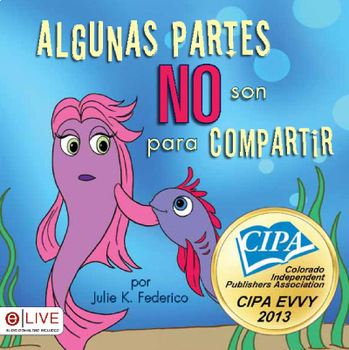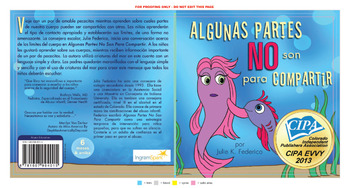Audio Algunas Partes NO son para Compartir
- Mp3 Audio File
Description
Algunas Partes NO Son Para Compartir Audio:
Play this while you need a few minutes of prep time or when you need to inhale some coffee for the day.
Viaje con un par de amable pececitos mientras aprenden sobre cuales partes de nuestro cuerpo pueden ser compartidas con otros. Los niños aprenderán el tipo de contacto apropiado y establecerán sus límites, de una forma no amenazante. La consejera escolar, Julie Federico, inicia una conversación acerca de los límites del cuerpo en Algunas Partes No Son Para Compartir. A los niños les gustará aprender sobre sus cuerpos, mientras reciben información importante de un par de pececitos. La autora utilizó criaturas del mar en este cuento con un lenguaje simple y claro. Los padres quedarán maravillados con el lenguaje simple y sencillo y con el uso de criaturas del mar para crear este mensaje que todos los niños deberán escuchar.
“Que libro tan maravilloso e importante para comenzar a enseñar a los niños acerca de la seguridad del cuerpo.”
Kathryn Wells, MD Pediatra, Especializada en el Tratamiento de Abuso Infantíl, Denver Health
“Gracias por hablar con la verdad. Necesitamos su voz y sabiduría….”
Marilyn Van Derbur, Autora de Miss America By Day MissAmericaByDay.com
Julie Federico
Child Abuse Prevention Expert
www.juliefederico.com



